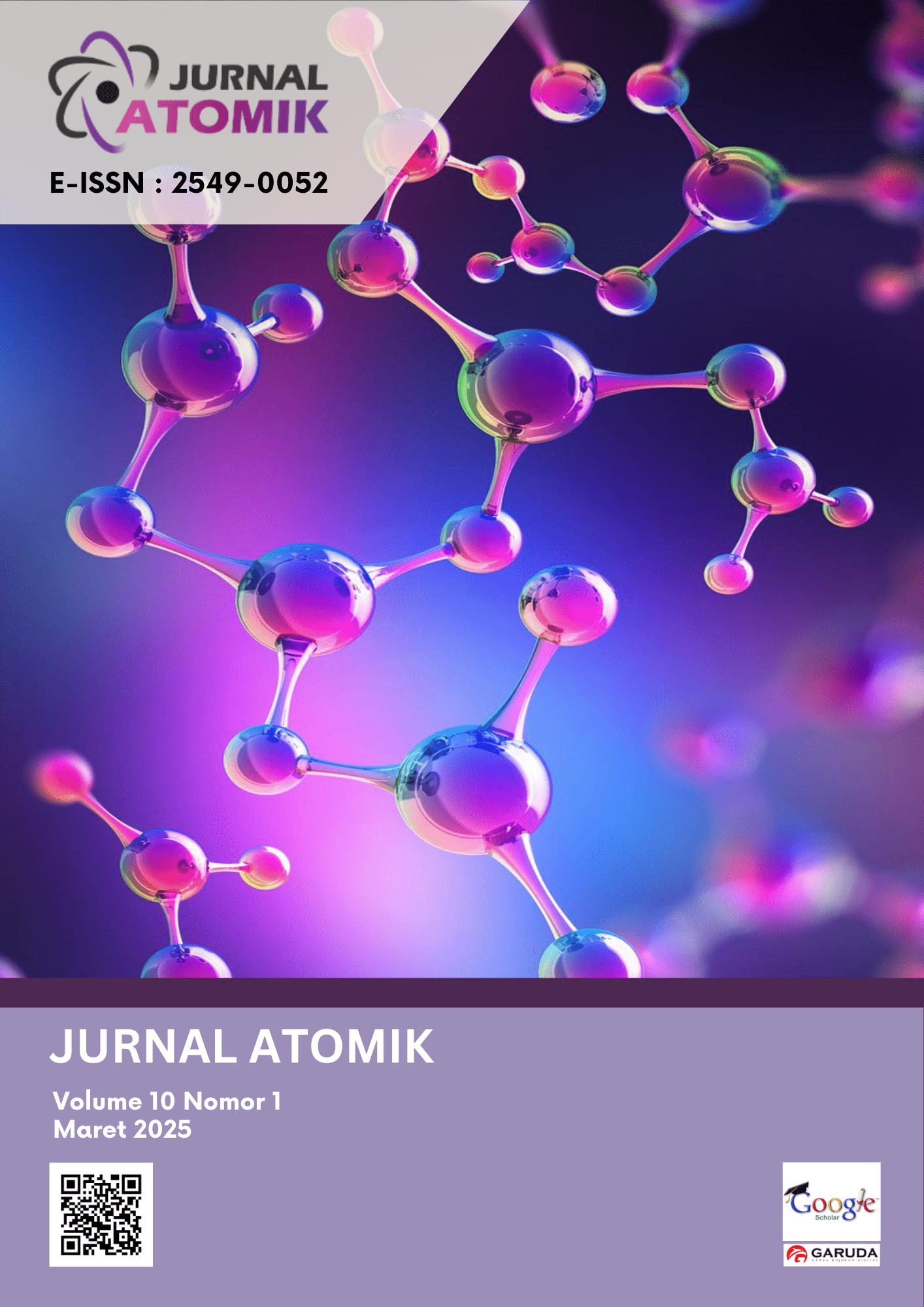PEMBUATAN ARANG AKTIF DAN KOMPOSIT Fe3O4-ARANG AKTIF KULIT BUAH TARAP SEBAGAI ADSORBEN LOGAM KADMIUM
Abstract
Tarap (Artocarpus odoratissimus B.) is a species of the genus Artocarpus and belongs to the Moraceae family. In its use, fruit cores, skins, and leaves can become metal adsorbents. This research aims to determine the characteristics and adsorption capacity of tarap fruit skin, which can be an alternative to dealing with cadmium (Cd) metal pollution. Making activated charcoal adsorbent tarap fruit peel was carbonated at a temperature of 450ºC for 1 hour and activated using 2 M HCl, while the Fe3O4-activated charcoal composite tarap fruit peel was made using the coprecipitation method from FeSO4.7H2O and FeCl3.6H2O with a mole ratio of 1:1 and then combined with tarap fruit peel activated charcoal to adsorb cadmium metal using the batch method, which is separated using an external magnet and analyzed using an Atomic Absorption Spectrophotometer. The results of FT-IR characterization on both adsorbents contained C-O and O-H groups and on the Fe3O4-activated charcoal composite of tarap fruit peel, there were Fe-O groups. The XRD difactogram shows that there is a Fe3O4 diffraction pattern with relatively small intensity in the Fe3O4-activated charcoal composite of tarap fruit peel. The results of VSM analysis show that the Fe3O4-activated charcoal composite of tarap fruit peel is paramagnetic. The optimum conditions for the adsorption of cadmium metal on activated charcoal from tarap fruit peel were at pH 7 with a contact time of 60 minutes and on the Fe3O4-activated charcoal composite from tarap fruit peel at pH 6 with a contact time of 45 minutes. The maximum adsorption capacity of activated charcoal from tarap fruit peel is 11.1316 mg/g and for the Fe3O4-activated charcoal composite tarap fruit peel is 22.9510 mg/g.






